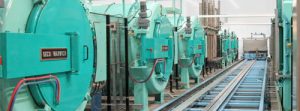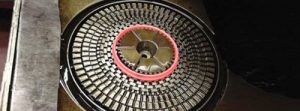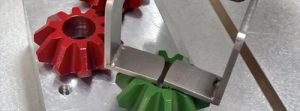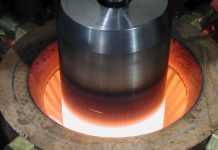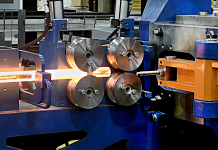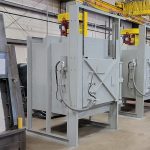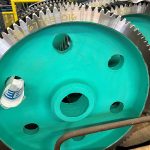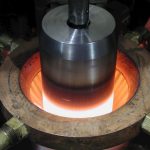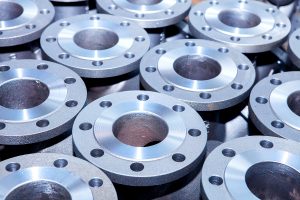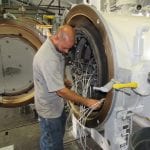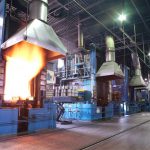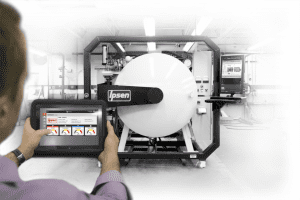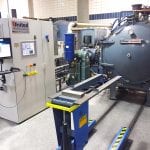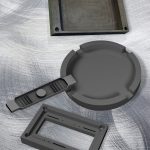As parts are treated in a vacuum furnace, those parts are subjected to high temperatures as well as high pressures. But once the vacuum treatment is done, those same parts aren’t out of danger yet. They have to be cooled properly or an entire batch could be lost — which can adversely affect a company’s bottom line.
Chilling components once they’re treated is an essential function, and Dimplex Thermal Solutions has been designing and manufacturing chillers to ensure a part’s final manufacturing step is performed properly and efficiently.
“In the vacuum furnace space, we use chillers to regulate the internal temperature,” said Jacob Burkholder, Vice President of Sales & Marketing for Dimplex Thermal Solutions. “We make sure the heat-treat results are consistent and protecting any sensitive materials that may be there. We really want stable cooling, especially in the vacuum furnace space. We want a well-controlled cooling profile so we don’t have micro-structural changes in metal or in the treated materials. We want to have reliable outcomes. And when you have rapid heating-cooling cycles, when you’re able to cool machines down faster, it reduces downtime and energy consumption. You can cycle that machine more often if you can cool it down faster, extract parts, and be able to reload and start a new cycle.”
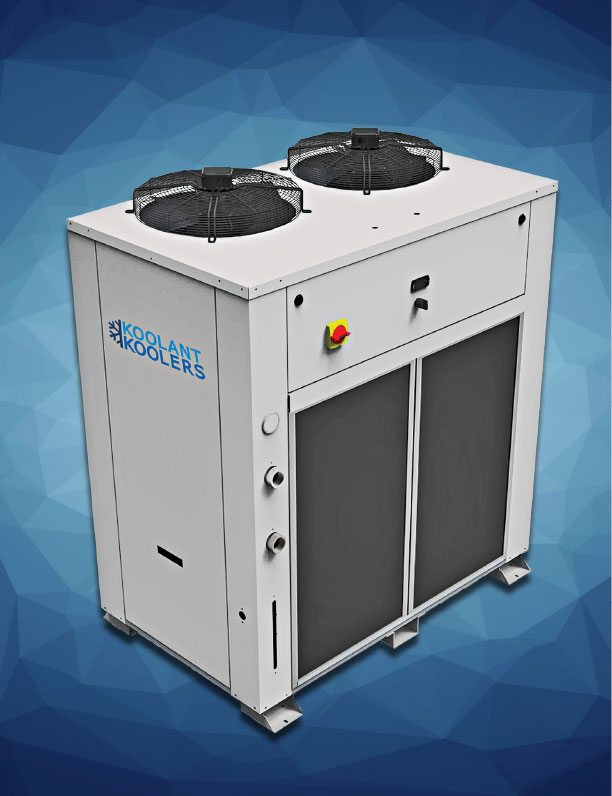
Temperature Profile
Maintaining the proper temperature profile is critical, according to Burkholder.
“If you cool too fast, you can have micro-structural changes in material,” he said. “It’s all about maintaining the temperature profile that the customer has asked us to help them hold. Our job is to provide the chiller and to provide that temperature control to their specification.”
In addition to providing chillers for vacuum furnaces, Dimplex also plays a part in regulating mold temperatures for injection molding plastic, as well as the metal finishing space, and electroplating, according to Burkholder.
“We help control the bath temperatures to ensure proper coating, reduced oxidation, and predictable chemical processing,” he said. “We want stable reactions for those chemicals.”
Understanding the Customer
As experts in the chiller business, Burkholder said Dimplex is focused on application expertise and understanding customer applications.
“We really want to understand what it is the customer is trying to accomplish and why they need process cooling and how they want the chiller to interact with their process,” he said. “It could be a chiller, or it could be as simple as a fluid cooler outside or some kind of heat exchanger. We want to know how that integrates with their application. We do have some standard products, but most customers that we deal with need some level of customization to ensure the machine really matches their requirements.”
Dimplex’s applications knowledge as well as its global reach give the company an edge with its competitors, according to Burkholder.
“It’s understanding that, when the customers come to us with a challenge, we’ve probably seen it before,” he said. “We’ve got folks who’ve been here 35-plus years. Someone at Dimplex has seen this application and knows the potential trials and tribulations. So, we can come up with a solution that fits that market and fits that segment in a reliable way.”
Long and Diverse History
Dimplex’s history goes back 70 years. It’s a family-owned business that has evolved over the years providing process cooling and chillers to different market segments that grew a global platform. In 2006, Koolant Koolers and Schreiber International merged. Along the way the company was acquired by Glen Dimplex Group in Ireland, who owns five different chiller manufacturers around the world. The U.S location is in Kalamazoo, Michigan, with others in Germany, India, and China, according to Burkholder.
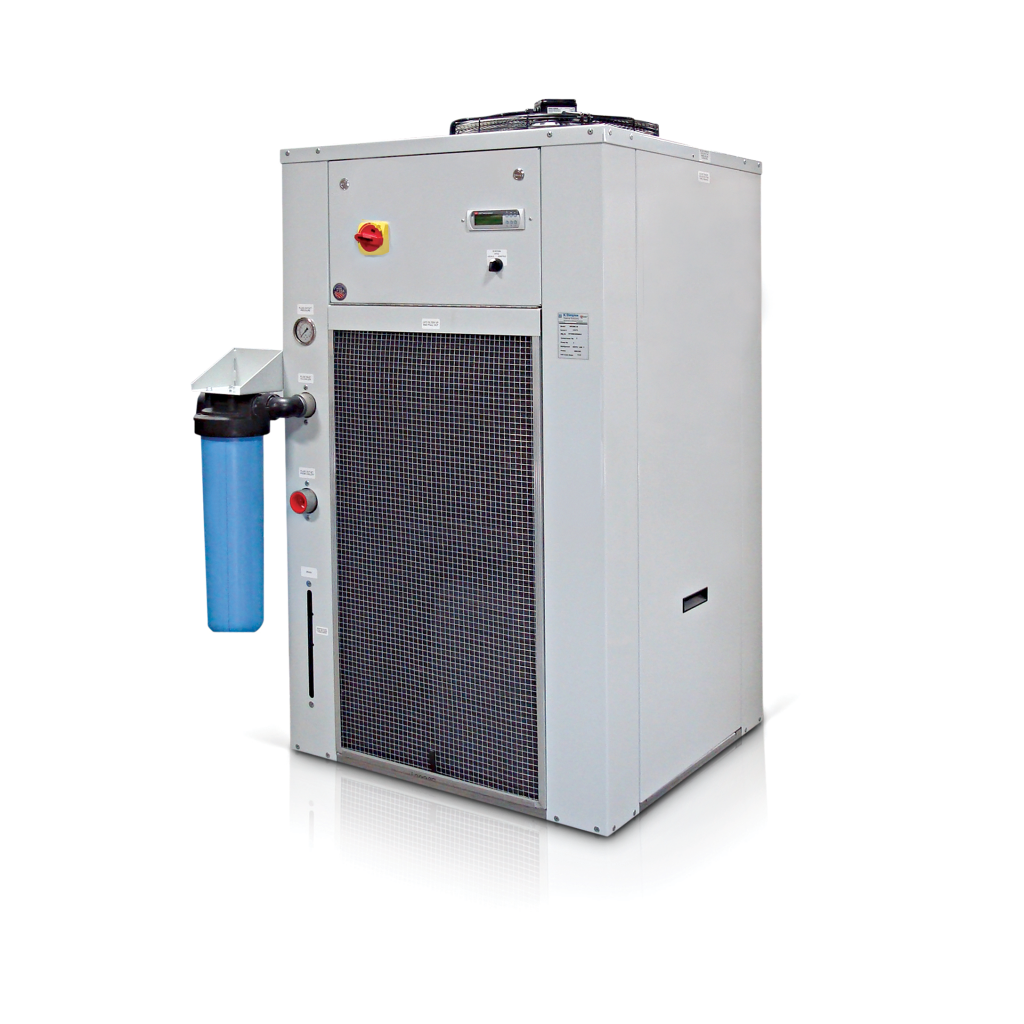
“Over the years, we’ve probably built over 70,000 chillers over the life of the business here in Kalamazoo,” he said.
Different kinds of chillers are needed in a variety of industries, and Burkholder said maintaining a broad view of the process cooling market has allowed Dimplex to survive and thrive in an ever-evolving sector.
“We play in lots of different spaces,” he said. “We play in machine tool and spindle-cooling markets, the cutting fluid filtration space, as well as chillers for laser cutting machines, heat treatment, and packaging. We’re traditionally quite strong in the medical imaging chillers market for MRI machines and the food and beverage industries. All of these different segments have their specific challenges, and they all evolve at different paces.”
Keeping Pace with Different Sectors
And some markets — for example, the semiconductor industry that makes chips — are constantly changing, which means Dimplex must stay hyper focused in order to keep those customers satisfied, according to Burkholder.
“We prioritize our sales team and channel partners to be highly responsive and engaged with customers in rapidly evolving markets like semiconductors, whereas maybe in the metal cutting space or the packaging space, there’s a slower evolution,” he said. “Our goal is to really use our external sales force to make sure we are getting the voice of the customer. We use our agents, reps and our extensive service network to keep a finger on the pulse of the market so we know where the trends are going. A lot of the external factors such as refrigerant regulations drive changes in our business that we don’t really control. We’re not a business the size of a Trane or a Carrier or a JCI — these large, integrated HVAC and chiller companies. We’re more of a niche focused in the industrial space. We don’t really drive those big market changes when it comes to refrigerants or energy efficiency, but we have to stay current so we can react and make sure our products are always compliant and on the cutting edge in the markets where we choose to participate.”
Focusing on customers’ needs means asking a lot of questions when Dimplex is approached with solving a challenge, according to Burkholder.
“It means listening to customers and asking lots of clarifying questions,” he said. “Our goal, when someone comes to us with an application or potential need is to think of it in terms of a long-term partnership and not as a transaction.”
Meeting Customer Needs
Many businesses are often transactionally focused, sometimes to the detriment of the needs of customers, according to Burkholder.
“They’re more about standard product and volume and getting that out the door and trying to fit their product into what the customer needs,” he said. “And maybe it’s perfect — maybe not. But we really try to ask clarifying questions upfront when customers come to us, for example: Are there any strategic reasons why a certain chiller might make more sense for the customer, for their product, especially for integrating with their product? We want to understand the workings of the environment where the product will be located.”
However, the key to solving a customer’s challenge often comes down to just avoiding surprises, according to Burkholder.
“We have to ask a lot of questions upfront because there are a lot of ‘gotchas’ in the process cooling space,” he said. “A decimal point off on a flow rate or a pressure measurement can change a lot in the customer’s application. We want to be very clear on what they’re looking for and that we’re clear in our response about what we think we can provide. Again, we want to be a strategic partner for them. Often the customer runs $1 million or $2 million machines, and the chiller is a small piece of that, but if the chiller is down, their large capital equipment is down. It’s critical for us to understand how we integrate with their equipment so our chiller gives them maximum uptime.”
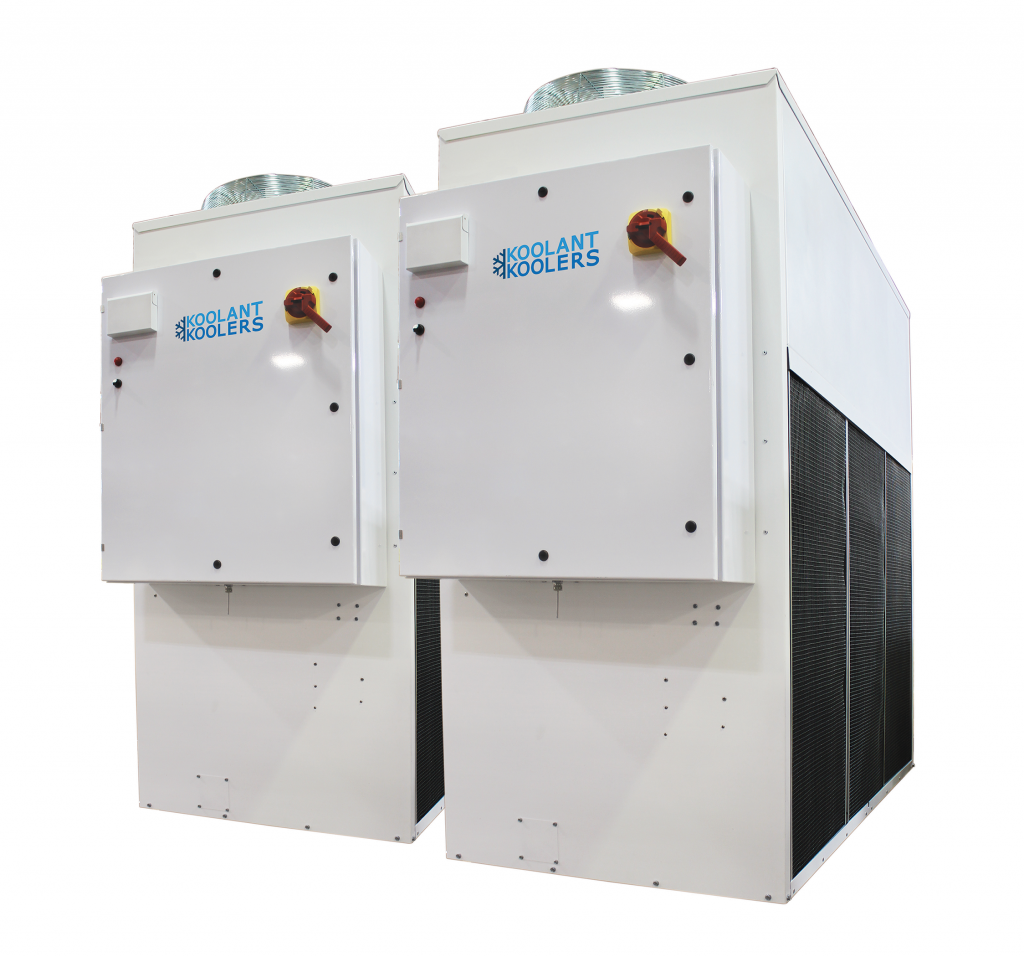
Solving Complex Challenges
Burkholder emphasizes that being able to quickly meet the company’s customer needs is a source of pride for him and his team at Dimplex.
“We are proud to solve complex challenges,” he said. “We’re solving difficult applications every day. I think when we look at our DNA, for example, our work in the medical imaging space has a direct impact on patient health. We keep MRI machines running and give them maximum uptime for our customers in the MRI space. It’s directly impacting people and their welfare and their health. That gives us a great sense of pride. In the industrial space, we’re keeping food and beverage factories running. We’re keeping automotive and aerospace factories running with our equipment. We’re making sure tolerances and finishes on metal parts are at the highest quality to keep aircraft engines safe. And when we’re working with machining companies, a customer might be machining fan blades for a jet engine, and that’s a very critical process, and we make sure we control the temperature of that cutting fluid.”
And being able to offer that expertise around the clock is just another benefit that Dimplex is proud to offer its customers, according to Burkholder.
“You can call us 24/7, 365 days a year,” he said. “We always have technicians on call every day of the year ready to take customer calls, both in the medical and the industrial space. No one can provide perfect chillers that never have an issue, but when there is an issue, we want to be available. If a customer has a question on a weekend or at night or on third shift somewhere and needs some help, we want to be there to answer those questions for them in a quick manner. That high support can be challenging to provide in a consistent way, but it’s something that really differentiates Dimplex in the market from our competitors and others in the space.”
Smarter, More Efficient, and Scalable
As Dimplex continues into the future, Burkholder expects more transformations into offering smarter, more energy efficient, and scalable products.
“That would be smarter controls and IOT in particular being the big trend for us,” he said. “We’ve committed internally that all of our future product designs will include connectivity. We’re launching new products with advanced refrigerants, and every chiller we manufacture in that product portfolio includes a modem and a direct connection, so we can remotely interact with that chiller, and see how it’s operating. It’s a full commitment for our organization to go into this space.
We want to leverage machine learning. We want to detect potential issues on our machines before there’s a failure so the customer has maximum uptime and reliability from our equipment.” In addition to smarter chillers, Burkholder said Dimplex will continue to strive toward offering advanced heat recovery systems that lower the energy footprint and lower customers’ cost of ownership for the product. “That’s really driving some innovation for us because it forces us to rethink some products and innovate a bit; it’s not always a bad thing to have regulation because it makes you think differently about your product,” he said. Dimplex also will continue to make headway in scalable cooling — meaning a product that can grow with a customer as their process changes and evolves, according to Burkholder.
“We want to be able to provide a strong offering where a customer might turn on five machines or 10 machines, or they’re going to expand their factory, so we can add chillers or add modules to an existing system to provide more cooling, but not necessarily having to add a ton of infrastructure around that,” he said. “We have a current offering that’s a scalable pressurized chiller system, and we’re really proud of it, and that product is going to be updated and improved next year as we look to do more of that type of business.”
More info www.dimplexthermal.com







